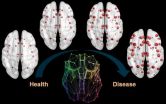(Press-News.org) Twenty-five years ago this month, the countries that compose the United Nations reached a landmark agreement that laid the foundation for much-needed strengthening of children's rights and protections in nearly every country around the world.
Today, the Convention on the Rights of the Child remains the only formal global effort to improve children's rights and the most widely ratified human rights treaty in history. Only three U.N. member nations have not ratified the treaty: Somalia, South Sudan and the United States.
"The Convention on the Rights of the Child is a promise from our global community to all children," said Dr. Jody Heymann, founding director of the World Policy Analysis Center and dean of the UCLA Fielding School of Public Health. "Everyone deserves to know whether their country is fulfilling that promise and how it compares to other countries facing similar opportunities and constraints."
To mark the 25th anniversary of the CRC on November 20, the center assessed 190 U.N. countries' progress toward fulfilling the CRC's commitment to children in critical areas such as the right to education, protection from child labor and child marriage, and discrimination of children with disabilities.
How are the world's children faring?
Child labor: Some 168 million children around the world are still engaged in some form of child labor. While 74 percent of the countries that ratified the CRC no longer allow children to engage in hazardous work, once legal exceptions are taken into account, nearly half of CRC countries still allow children to work in jobs that endanger their health and safety, including mining and factory work.
Education: Twenty-four percent of the countries that ratified the CRC charge tuition before the end of secondary education. Tuition fees create barriers to education, particularly for girls and poor and marginalized children, and there are still large gaps in secondary enrollment.
Child marriage: Eighty-eight percent of countries that ratified the CRC have set a minimum age for marriage of 18 or older. But when exceptions with parental consent are included, only 49 percent of these countries protect girls from early marriage.
Children with disabilities: Only 19 percent of countries that ratified the CRC explicitly protect the right to education for children with disabilities or prohibit discrimination in education based on disability.
Parental leave: The U.S. is the only high-income country in the world that doesn't guarantee mothers paid leave after the birth of a child.
Heymann noted that the welfare of children is dependent on social conditions.
"Working parents need paid leave so they can afford to care for their newborns," she said. "Financially feasible education shapes which children have a chance to attend school and for how long. Wages that enable families to exit poverty shape the conditions under which children live.
"The Convention on the Rights of the Child laid the foundation 25 years ago for all children to have a chance at healthy development, so they can thrive now and grow up to lead healthy and productive adult lives. But this will only come to fruition if we are as focused on the CRC's full implementation as on its passage."
The U.S., which signed but has not ratified the convention, has passed and enforced a number of laws to protect children. But it remains the only high-income nation in the world without national paid maternity or parental leave. Parental leave, both maternal and paternal, is critical to a child's health, development and wellness.
"With the passage of the CRC, the rights of the world's youngest citizens were recognized," Heymann said. "Yet we still lag far behind on the implementation of universal protections important to children's healthy development."
INFORMATION:
The World Policy Analysis Center is the first and largest data center providing quantitatively analyzable data on policies in all 193 U.N. member states in a range of critical areas, including education, health, environment, poverty, families, adult labor, marriage, childhood, child labor, equal rights and discrimination, aging, disability and gender. Its resource bank is the first global effort to analyze laws, policies and constitutional rights that show whether countries are following through with their commitments to children. The one-of-a-kind compilation of global data includes easy-to-use maps, fact sheets, infographics and in-depth reports.
Ebola GP protein covers the virus' surface and is shed from infected cells during infection. A study published on November 20th in PLOS Pathogens reports that shed GP can trigger massive dysregulation of the immune response and affect the permeability of blood vessels
Ebola virus has seven genes. One of them, called GP, codes for two related proteins: a shorter secreted one and a longer one that spans the viral wall and sticks out of its surface. During virus infection, some of the surface GP is cut off by a human enzyme and is subsequently shed from infected cells. High ...
Researchers from the Montreal Neurological Institute have used a model inspired by patterns of epidemic disease spreading to map how misfolded proteins propagate within the brain.
Proteins which fail to configure correctly (misfolded proteins) are associated with aging and several human neurodegenerative diseases, such as Alzheimer's. In research published in this week's PLOS Computational Biology, Yasser Iturria Medina and colleagues analyze over 700 individual Amyloid-beta proteins imaging datasets to conclude that the propagation of these misfolded proteins, associated ...
An international team of researchers has shown that it may be possible to improve the effectiveness of the seasonal flu vaccine by 'pre-empting' the evolution of the influenza virus.
In a study published today in the journal Science, the researchers, led by the University of Cambridge, describe how an immunological phenomenon they refer to as a 'back boost' suggests that it may be better to pre-emptively vaccinate against likely future strains than to use a strain already circulating in the human population.
Influenza is a notoriously difficult virus against which to ...
RIVERSIDE, Calif. - Yellow fever is a disease that can result in symptoms ranging from fever to severe liver damage. Found in South America and sub-Saharan Africa, each year the disease results in 200,000 new cases and kills 30,000 people. About 900 million people are at risk of contracting the disease.
Now a research team led by a biomedical scientist at the University of California, Riverside has determined that the yellow fever virus, a hemorrhagic fever virus, replicates primarily in the liver. Therefore, other organ failures that often follow in people with the ...
During the development of mammals, the growth and organization of digits are orchestrated by Hox genes, which are activated very early in precise regions of the embryo. These "architect genes" are themselves regulated by a large piece of adjacent DNA. A study led by Denis Duboule, professor at the University of Geneva (UNIGE) and the Federal Institute of Technology in Lausanne (EPFL), Switzerland, reveals that this same DNA regulatory sequence also controls the architect genes during the development of the external genitals. The results published in Science magazine, indicate ...
If you are an active senior who wants to stay younger, keep on running.
A new study involving the University of Colorado Boulder and Humboldt State University shows that senior citizens who run several times a week for exercise expend about the same amount of energy walking as a typical 20-year-old.
But older people who walk for exercise rather than jog expend about the same amount of energy walking as older, sedentary adults, and expend up to 22 percent more energy walking than the 20-something crowd. The study, led by Humboldt State Professor Justus Ortega, was published ...
Animal teeth, bones and plant remains have helped researchers from Cambridge, China and America to pinpoint a date for what could be the earliest sustained human habitation at high altitude.
Archaeological discoveries from the 'roof of the world' on the Tibetan Plateau indicate that from 3,600 years ago, crop growing and the raising of livestock was taking place year-round at hitherto unprecedented altitudes.
The findings, published today in Science, demonstrate that across 53 archaeological sites spanning 800 miles, there is evidence of sustained farming and human ...
China's second great wall, a vast seawall covering more than half of the country's mainland coastline, is a foundation for financial gain - and also a dyke holding a swelling rush of ecological woes.
A group of international sustainability scholars, including Jianguo "Jack" Liu, director of Michigan State University's Center for Systems Integration and Sustainability, in a paper published today in Science magazine, outline the sweeping downsides of one of China's efforts to fuel its booming economy, downsides that extend beyond China.
China's coastal regions are only ...
The Himalaya features some of the most impressive gorges on Earth that have been formed by rivers. The geologic history of the famous Tsangpo Gorge, in the eastern Himalaya, now needs to be rewritten.
A team of German, Chinese, and American geoscientists have namely discovered a canyon, filled with more than 500 m of sediments beneath the bed of the present-day Yarlung Tsangpo River upstream from the gorge. Using drill cores, the scientists were able to reconstruct the former valley floor of this river, which allowed them to reconstruct the geological history of the Tsangpo ...
Doctors have long been mystified as to why HIV-1 rapidly sickens some individuals, while in others the virus has difficulties gaining a foothold. Now, a study of genetic variation in HIV-1 and in the cells it infects reported by University of Minnesota researchers in this week's issue of PLOS Genetics has uncovered a chink in HIV-1's armor that may, at least in part, explain the puzzling difference -- and potentially open the door to new treatments.
HIV-1 harms people by invading immune system cells known as T lymphocytes, hijacking their molecular machinery to make more ...





